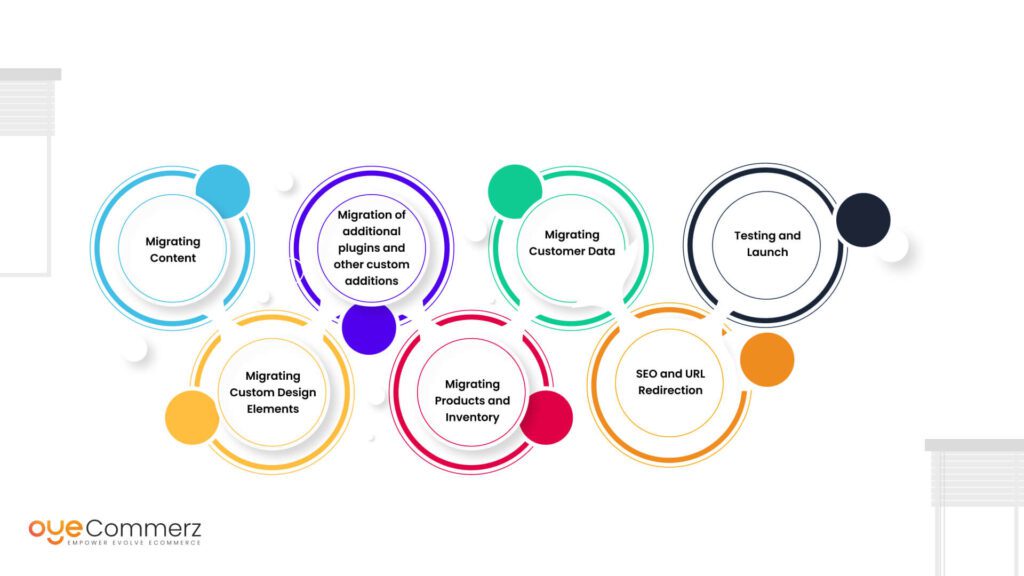Transitioning from WordPress to Shopify marks an exciting step in optimizing your e-commerce processes. As businesses expand, choosing a solution that aligns with growth potential, UX, and customization is essential. Shopify has emerged as a preferred choice for online merchants, providing unmatched adaptability, security, and user-friendliness. In this guide, we’ll explore why this migration is a game-changer, highlight the benefits, and share actionable steps to facilitate a seamless move.
1. Why Migrate from WP to Shopify?
The combination of WordPress and WooCommerce, has served countless e-commerce platforms. However, as businesses scale, issues like plugin dependency, data risks, and complex setups can hinder progress. Shopify, designed explicitly for digital retail, addresses these issues with an comprehensive, intuitive solution. Real data back this shift—Shopify hosts over 4.4 million stores globally, with a documented 10% boost to sales conversion rates for numerous merchants post-switch.
2. Key Benefits of Shopify for E-commerce Success
Shopify’s powerful platform is tailored for scaling businesses. Its standout benefits include:
- Seamless Customization: Shopify offers over 80 professionally designed themes.
- Integrated Tools: Features like Shopify Payments and built-in SEO save time and effort.
- Global Reach: Multi-currency support and localization features empower brands to expand internationally.
Additionally, Shopify delivers an availability percentage of 99.98%, guaranteeing your store is always operational.
3. Getting Ready for Your WP-to-Shopify Transition
Prior to starting the migration process, assess your current store. Review inventory details, client information, and search engine rankings. Resources such as Shopify’s Migration Kit or third-party solutions can simplify this process. Develop a comprehensive plan, ensuring all resources—product descriptions, media files, and articles—are optimized for transfer.
4. The Importance of Accurate Data Migration
Data migration is a cornerstone of a smooth transition. When migrating from WordPress to Shopify, focus on:
- Product Information: SKU, item summaries, and categories.
- Customer Data: Emails, purchase records, and preferences.
- Search Engine Considerations: Preserve meta tags, URLs, and forwarding paths to maintain search rankings.
Use apps like LitExtension to facilitate seamless migration while minimizing errors.
5. Tailoring Your Shopify Store to Fit Your Brand
Post-migration, personalizing your Shopify store ensures it reflects your brand. Take advantage of Shopify’s drag-and-drop editor to create layouts with ease. Shopify's themes are optimized for all devices, providing a smooth UX across devices—a key point, since 74% of e-commerce traffic is generated by mobile users.
6. How to Protect Your SEO Rankings When Switching Platforms
SEO is vital for maintaining your visibility during migration. Shopify excels in SEO with organized link formatting, preloaded features, and seamless blog integration. Make sure you:
- Set up URL forwarding for old URLs.
- Optimize new pages with keyword-rich content.
- Use Shopify's apps Plug in SEO to monitor performance post-migration.
7. Essential Tests After Migrating to Shopify
After finishing the transfer, conduct thorough testing.
Review: - Website speed (Shopify delivers faster speeds in contrast with WP).
- Functionality of payment gateways and checkout processes.
- Mobile responsiveness.
Quality assurance ensures your store delivers a smooth shopping experience from day one.
8. Case Study of a Successful Migration
An example of effective platform switching is Gymshark, a sportswear company that transitioned to Shopify. After the switch, the company saw a 60% boost in mobile sales and significantly lowered site downtime. This highlights the capabilities of Shopify in driving online business success.
9. Challenges and Solutions
Migration comes with challenges, such as information accuracy and adjusting tailored features. However, Shopify’s robust support and external professionals simplify the process. Partnering with qualified Shopify developers ensures a smooth transition.
10. Making the Switch: The First Step Toward Success
Switching from WordPress to Shopify marks a forward-thinking approach to e-commerce. By focusing on growth, streamlining operations, and enhancing the customer experience, Shopify empowers businesses to thrive in challenging industries.
Final Thoughts
Switching from WP to Shopify is a strategic move that can greatly enhance your online business performance. With a robust migration plan, the right Custom Shopify development tools, and professional guidance, you can achieve new growth opportunities. Shopify SEO setup
Ready to make the leap? Reach out today to learn how our Shopify migration services can revolutionize your online store. Contact us now, or ask yourself: Can your business afford to miss out on Shopify’s growth potential?
